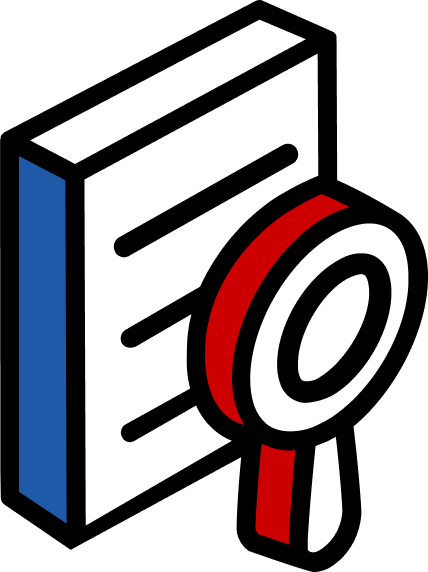Content Outline
One Budget. One Funnel. 22% Lower CPL: Why Agile, Integrated Media is the SEA Marketer's Best-Kept Secret

Last month, a global 3PL CMO in Singapore pulled up her Q1 dashboard with visible frustration. "We spent $180K on brand awareness campaigns, got great reach metrics, then scrambled with $40K in Q4 when we desperately needed leads for year-end targets. We missed pipeline by over 50%."
Sound familiar? In my 15 years working with B2B enterprises across Southeast Asia, I see this budget-splitting mistake costing companies six figures annually. The data tells a stark story: CPL has surged 38% across SEA markets over 24 months, but my clients using integrated media approaches actually saw 22% decreases in the same period.
You're not alone in discovering this blind spot. I've worked with over 50 B2B marketing teams across 6 SEA markets, and the pattern is consistent: split budgets create split results.
The Hidden Cost of Channel Chaos
Here's what I find most troubling about traditional budget allocation: smart marketers are essentially fighting two wars with one army.
The worst case I encountered: this same 3PL company spent $300K on brand awareness campaigns in Q1, achieved impressive reach across Thailand, Vietnam, and Indonesia, then had just $60K left for demand generation when Q4 deals needed to close. They missed their annual pipeline target by over 50%.
 But here's the regional complexity that makes this worse: SEA B2B marketers juggle 4+ markets, 3+ languages, and multiple cultural contexts. When you split brand and demand budgets, you're not just creating inefficiency—you're multiplying it across every market.
But here's the regional complexity that makes this worse: SEA B2B marketers juggle 4+ markets, 3+ languages, and multiple cultural contexts. When you split brand and demand budgets, you're not just creating inefficiency—you're multiplying it across every market.
Google's research reveals the 7-11-4 rule: B2B buyers need an average of 7 hours of engagement across 11 different touch points, on 4 different platforms before making a purchase decision. When brand and demand campaigns operate separately, you're fragmenting this already complex journey across disconnected touch points.
The missed opportunities compound quickly:
- Brand campaigns can't capitalise on demand signals
- Demand campaigns lack the trust foundation that brand builds
- Budget reallocation happens quarterly instead of weekly, missing real-time opportunities
The Solution: Stop Thinking Channels, Start Thinking Customer Journey
After implementing unified media strategies with 20+ B2B enterprises, I've learned this: the most successful SEA marketers don't separate brand and demand—they integrate them into one intelligent funnel.
Here's the mindset shift that changes everything: One Budget. One Funnel. One KPI Sheet.
The Integration Framework I've Developed
Conversion-Flow Mapping Instead of separate brand and demand funnels, I map one unified customer journey:
- Awareness: First brand touchpoint plus problem identification (thought leadership, industry pain points, market research)
- Consideration: Retargeting campaigns that hit audiences who engaged with awareness problem statements, ensuring multi-platform, multi-touch engagement with qualified prospects
- Decision: Direct response media augmented by email nurturing sequences that maximise impact while minimising media spend
The magic happens when brand touch points include conversion opportunities and demand touch points reinforce brand positioning.
Unified Media Planning One budget allocation across the entire customer lifecycle:
- 80% Awareness (Problem identification messaging with engagement tracking)
- 15% Consideration + Conversion (Action based messaging as Retargeting ads across multiple platforms to capture Net New Names)
- 5% Decision + Nurturing (mostly over email to those who have engaged with our campaign)
.png?width=1200&height=627&name=Integrated%20Funnel%20Budget%20$plit%20(LinkedIn%20Image).png)
The Agility Layer: Adaptive Channel Strategy
Integration is just the foundation. In my work across SEA markets, agility determines who wins.
Agile media means:
- Early channel adoption: I help clients pilot emerging platforms before they saturate (e.g. TikTok videos, LinkedIn Document Ads, WeChat Business for enterprise)
- Weekly reallocation: Budget shifts based on performance, not quarterly planning cycles
- Cultural adaptation: Vietnam WhatsApp strategies differ from Singapore LinkedIn approaches
The first-mover advantage is real: Early adopters typically enjoy 25-40% lower CPL before platforms mature and competition increases. Teams that arrive late to emerging channels pay premium rates—like entering LinkedIn when it's saturated versus early platform adoption.
When I implemented this approach with a B2B tech company expanding across ASEAN, we leveraged Facebook ads with B2B tech content well before competitors, resulting in 60% lower CPL and 3x engagement rates compared to saturated LinkedIn audiences.
Proof Points: What Integration Actually Delivers
SAP Regional Campaign Combining brand positioning ("SAP: Leading ERP Software") with demand messaging ("See ROI in 90 days") in the same campaign flow:
- 3x CTR improvement over generic demand ads
- 40% better qualified leads due to brand trust factor
- Lower overall CAC despite premium brand positioning
What surprised me most was how the sales team responded—leads came in pre-qualified and brand-aware, shortening sales cycles by an average of 3 weeks.
Before vs. After Media Allocation
Traditional Split Approach:
- Brand Budget: $100K (awareness metrics, no conversion tracking)
- Demand Budget: $80K (leads only, no brand reinforcement)
Integrated Approach:
- Unified Budget: $180K across full customer journey
- Awareness+Conversion: $144K (80%)
- Consideration+Decision: $27K (15%)
- Decision+Nurturing: $9K (5%)
The integrated approach consistently delivers 20-30% better ROI in my client implementations.
Three Quick Wins You Can Implement This Quarter
- Budget Consolidation Merge your brand and demand budgets into one planning document. Track both awareness metrics and conversion metrics from every channel.
- Channel Audit with Integration Lens Score your current channels on reach, cost, and intent—but add a fourth dimension: integration potential. LinkedIn, for example, scores high on all four because brand thought leadership and demand generation can happen in the same feed.
- Emerging Channel Testing Allocate 10-15% of spend to testing one new channel this quarter. I recommend starting with platforms that show early B2B adoption in your target markets.
Implementation reality check: This isn't a weekend project. In my experience, full integration takes 90 days to implement properly across multiple markets. Start with one market as a pilot, prove the approach, then scale.
The Early-Mover Opportunity
We're at an inflection point in SEA B2B marketing. While competitors cling to outdated budget silos, integrated marketers are capturing market share at dramatically lower costs.
In my work across Vietnam's competitive fintech space, Malaysia's enterprise software market, and Indonesia's logistics sector, I consistently see 6-month windows where integrated approaches deliver outsized returns before competitors adapt.
Want to see where your media mix ranks against the integrated approach? I created this scorecard based on patterns I see across 50+ SEA marketing teams: [Take the IMPACT Scorecard]
Ready to stop fighting two wars with one army? Let's unify your funnel and watch your efficiency compound across every market you serve.
About the Author


Guide
Assess Your IMPACT
Try our IMPACT scorecard to discover how your marketing stacks up across our six-pillar framework. Get a data-driven scorecard that identifies gaps and opportunities for measurable growth.